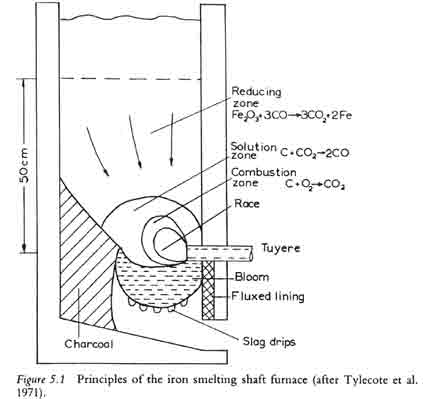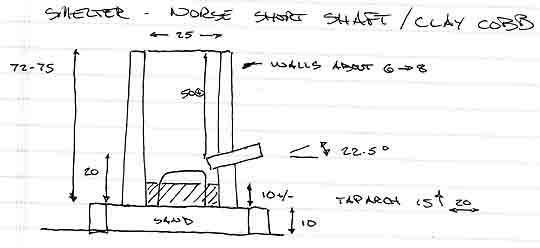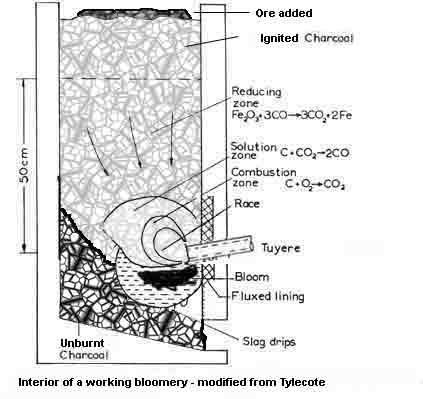 The first image is from R.F. Tylecote's 'The Early History of Metallurgy in Europe' (pg 155 - Longman Group, Essex England, 1987) it is captioned 'after Tylcote et al. 1971' That second citation for that paper I don't have.
The first image is from R.F. Tylecote's 'The Early History of Metallurgy in Europe' (pg 155 - Longman Group, Essex England, 1987) it is captioned 'after Tylcote et al. 1971' That second citation for that paper I don't have.First thing - with more research five years ago, I might have stumbled on this illustration. Unfortunately it is not further detailed in the text. It does show a smelter in the size range of what my team has been working with. Most significantly, the height above the tuyere is clearly marked at 50 cm. The other measurements can be estimated from that - and give an internal diameter of about 30 cm. A good working location for the tuyere above the base of the furnace can be estimated at about 15 cm. In practice we have found (through many trials and errors!) that all these measurements are critical.

The main thing different from the Tylecote illustration and my own working drawing is the angle of the tuyere. Now we have found this to be critical as well, inside the overall system we are currently using. To keep the tuyere from being drowned in liquid slag, there needs to be a downwards angle to the air blast, not horizontal as seen in Tylecote's. Tylecote is also clearly illustrating the situation inside a furnace operating with LOWER AIR VOLUMES. The distance of penetration of the combustion area shows that.

One part of the illustration I do quibble about is that there is a clear empty space shown under the slag bowl. At the start of the smelt sequence, this space would be filled with charcoal of course. It the illustration is presumed to be the situation at the point slag is being tapped, then the lower material would have been cleared as shown. Most importantly, the original illustration does not correctly show the bloom. What is shown is actually the position of the entire slag bowl, and of course the bloom develops at the upper front within the slag bowl. One last difference between Tylecote's drawing and what we have directly observed is the indicated extent of 'fluxed lining'. In actual fact, this distinctive glazing of the inside surface of the smelter does not extend past the bottom of the slag bowl as he showed. It does however extend for some distance above the tuyere.




















No comments:
Post a Comment